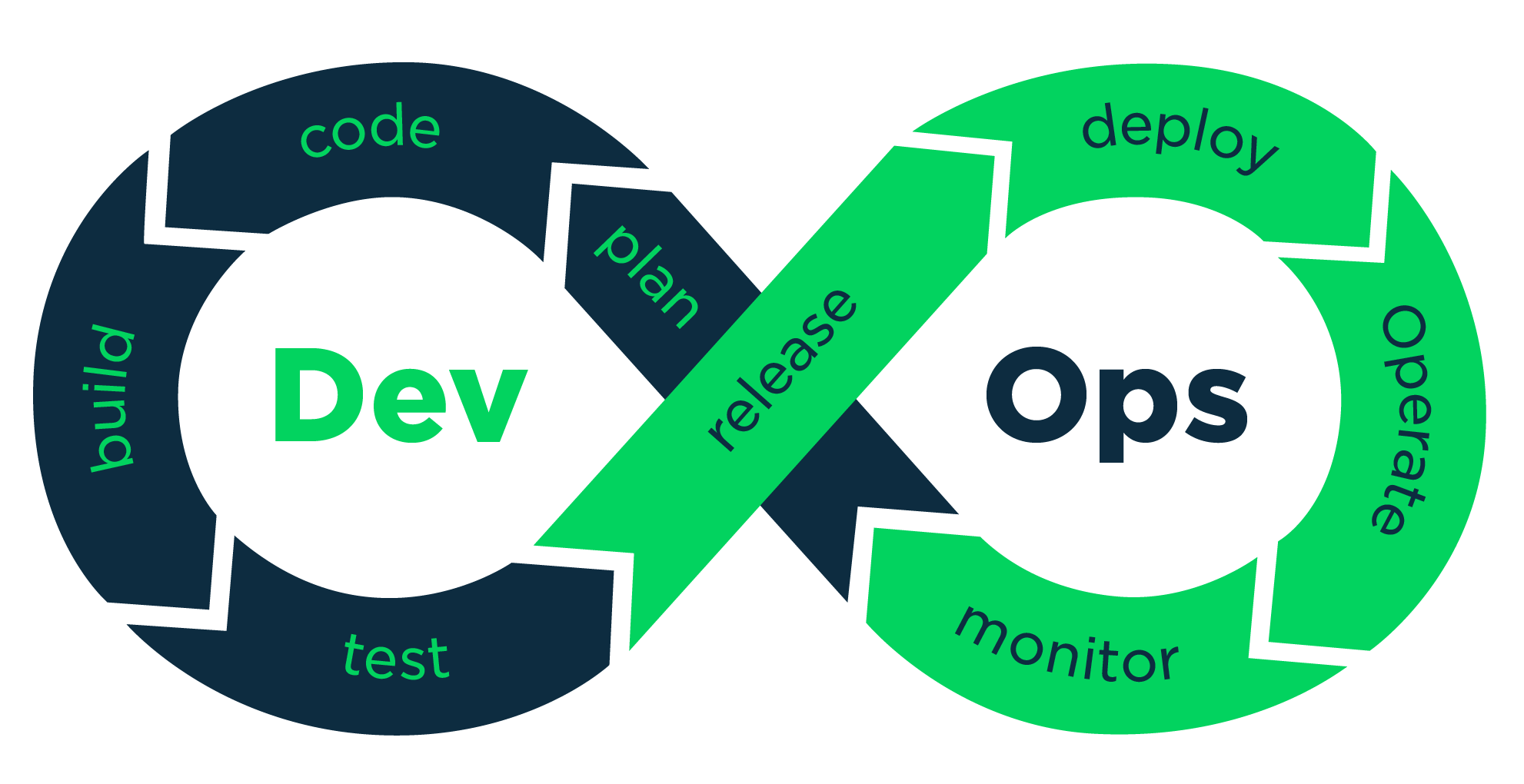Day0 - Devops
 Ankit Gupta
Ankit GuptaTable of contents
- Exercise 1: Research a case study about a company that failed due to the lack of DevOps principles. Write down your observations.
- Exercise 2: What makes DevOps culture special? How does it differ from traditional IT culture?
- Exercise 3: List the DevOps cultural principles that you feel would have helped prevent NexusCorp's initial problems.
- Questions to Open Up Minds:
- Q1: What was the most shocking aspect of NexusCorp's initial state to you?
- Q2: Why do you think DevOps could be a solution to NexusCorp's problems?
- Q3: How can DevOps be customized to fit different organizational needs?

Exercise 1: Research a case study about a company that failed due to the lack of DevOps principles. Write down your observations.
In the case of Nexuscorps case, The research provides general insights based on common issues associated with the absence of DevOps principles.
Observations:
Inefficient Collaboration:
- Lack of collaboration between development and operations teams may lead to communication gaps, delayed feedback, and increased chances of errors.
Slow Time to Market:
- Failure to implement continuous integration and continuous delivery (CI/CD) processes can result in slow release cycles, hindering the company's ability to respond quickly to market demands.
Frequent Downtime:
- Without proper automation and monitoring, companies may experience more downtime due to manual errors or a lack of quick response mechanisms.
Inadequate Scalability:
- Failing to adopt scalable infrastructure and automation tools may lead to difficulties in handling increased workloads, affecting the company's ability to scale efficiently.
Security Vulnerabilities:
- A lack of DevSecOps practices may result in security vulnerabilities, making the company susceptible to data breaches and other cybersecurity threats.
Learning Points:
Culture Change:
- Companies should focus on fostering a culture of collaboration, communication, and shared responsibility among development, operations, and security teams.
Automation Implementation:
- Automate repetitive tasks, testing, and deployment processes to enhance efficiency and reduce the likelihood of errors.
Continuous Improvement:
- Emphasize the importance of continuous improvement and learning within the organization to stay updated on industry best practices and emerging technologies.
Exercise 2: What makes DevOps culture special? How does it differ from traditional IT culture?
DevOps culture is distinctive in its approach to software development, IT operations, and the overall delivery pipeline. Here are some key characteristics that make DevOps culture special and set it apart from traditional IT culture:
Collaboration and Communication:
DevOps Culture: Emphasizes strong collaboration and communication between development, operations, and other relevant teams (often including security and QA). This collaboration is essential for breaking down silos and fostering a shared responsibility for the entire software delivery process.
Traditional IT Culture: Historically, there might be more silos and limited communication between development and operations teams. Each team may operate independently, leading to a lack of understanding of each other's challenges and priorities.
Before, teams might not talk much to each other. They had their own jobs to do, and it wasn't always easy for them to understand what others were doing.
Automation:
DevOps Culture: Advocates for extensive automation throughout the software development lifecycle. This includes automated testing, continuous integration, continuous deployment, and infrastructure as code. Automation helps reduce manual errors, accelerates delivery, and enhances overall efficiency.
Traditional IT Culture: May rely more on manual processes, resulting in slower development cycles and a higher likelihood of errors. Manual interventions can also lead to inconsistencies across environments.
Continuous Integration and Continuous Delivery (CI/CD):
DevOps Culture: Prioritizes the implementation of CI/CD pipelines, enabling developers to frequently and reliably release code changes to production. This approach supports rapid and iterative development, reducing the time it takes to bring new features to users.

Traditional IT Culture: Might follow a more traditional and slower release cycle, with infrequent releases and longer deployment timelines. This can result in delayed responses to market demands and increased risk associated with larger releases.
Infrastructure as Code (IaC):
DevOps Culture: Utilizes Infrastructure as Code to define and manage infrastructure configurations through code. This approach enhances consistency, scalability, and the ability to version-control infrastructure changes.
Traditional IT Culture: This may rely on manual configuration and management of infrastructure, leading to inconsistencies and difficulties in replicating environments accurately.
Feedback Loop:
DevOps Culture: Establishes a fast and iterative feedback loop by integrating feedback from operations and end-users into the development process. This facilitates quick identification and resolution of issues.
Traditional IT Culture: Feedback loops may be slower, with limited communication between development and operations. This can result in delayed responses to issues and challenges.
Cultural Shift:
DevOps Culture: Involves a cultural shift towards shared responsibility, accountability, and a willingness to learn and adapt. Encourages a mindset of continuous improvement and learning from both successes and failures.
Traditional IT Culture: May have a more rigid and compartmentalized structure, with distinct roles and responsibilities. Changes might be met with resistance, and learning opportunities from failures might be missed.
In summary, DevOps culture stands out for its emphasis on collaboration, automation, continuous delivery, and a mindset of continuous improvement. It aims to break down traditional silos between development and operations, fostering an environment where teams work together seamlessly to deliver high-quality software rapidly and reliably.
Exercise 3: List the DevOps cultural principles that you feel would have helped prevent NexusCorp's initial problems.
To identify the DevOps cultural principles that could have helped prevent NexusCorp's initial problems, we'll assume that NexusCorp faced issues related to collaboration, communication, and efficiency in their software development and IT operations. Here are several DevOps cultural principles that could have been beneficial:
Collaboration and Communication:
Principle: Foster a culture of collaboration and open communication between development, operations, and other relevant teams.
Application: Encouraging teams to work closely together, share insights, and understand each other's challenges and priorities. This helps in breaking down silos and building a shared responsibility for the software delivery process.
Automation:
Principle: Advocate for extensive automation throughout the software development lifecycle, including testing, integration, deployment, and infrastructure management.
Application: Implementing automation tools to reduce manual errors, accelerate delivery processes, and enhance overall efficiency in software development and operations tasks.
Continuous Integration and Continuous Delivery (CI/CD):
Principle: Prioritize the implementation of CI/CD pipelines to enable frequent and reliable releases of code changes to production.
Application: Establishing automated CI/CD pipelines ensures a smooth and rapid deployment process, allowing NexusCorp to respond quickly to market demands and reduce the risk associated with larger releases.
Infrastructure as Code (IaC):
Principle: Utilize Infrastructure as Code to define and manage infrastructure configurations through code.
Application: Implementing IaC practices helps ensure consistency, scalability, and version control of infrastructure changes, reducing the likelihood of inconsistencies and facilitating easier replication of environments.
Feedback Loop:
Principle: Establish a fast and iterative feedback loop by integrating feedback from operations and end-users into the development process.
Application: Regularly collecting and acting upon feedback helps identify and resolve issues quickly, contributing to an improved and user-centric software development cycle.
Cultural Shift:
Principle: Promote a cultural shift towards shared responsibility, accountability, and a willingness to learn and adapt.
Application: Encouraging a mindset of continuous improvement and learning from both successes and failures creates a more adaptive and resilient organizational culture.
By embracing these DevOps cultural principles, NexusCorp could have created an environment that encourages collaboration, automation, rapid and reliable delivery, infrastructure consistency, effective feedback, and a continuous improvement mindset. This would likely have helped address their initial problems and establish a more efficient and responsive software development and operations process.
Questions to Open Up Minds:
Q1: What was the most shocking aspect of NexusCorp's initial state to you?
What surprised me about NexusCorp's starting point was the lack of effective communication and collaboration. Without these, everyone gets stuck on problems, and there's a lack of accountability to resolve issues, leading to project delays.
Q2: Why do you think DevOps could be a solution to NexusCorp's problems?
DevOps has the potential to solve NexusCorp's issues by introducing continuous integration and continuous deployment (CI/CD). This promotes teamwork, ensuring effective communication and collaboration. With each team member taking responsibility for their work, automation comes into play, eliminating repetitive tasks. The advantage of tracking each step allows for quick identification and resolution of problems, saving valuable time.
Q3: How can DevOps be customized to fit different organizational needs?
DevOps can be tailored to diverse organizational needs by adjusting processes, tools, and cultural aspects. Customization involves aligning DevOps practices with specific business goals, accommodating varied team structures, integrating suitable automation tools, and fostering a culture of collaboration and continuous improvement. This adaptability allows organizations to implement DevOps in a way that best suits their unique requirements and challenges.
🙏🙏🙏🙏🙏🙏🙏🙏🙏🙏🙏🙏🙏🙏🙏🙏🙏🙏🙏🙏🙏🙏🙏🙏
I sincerely hope this blog helps you save valuable time, allowing you to cherish moments with your loved ones. Keep smiling and spread the love!😄😄. Thank you for reading.🤝🤝
Your support means the world to me. If you’ve found this blog enjoyable and informative, Please take a moment to hit that cheerful Like button and share it with others. Thank you for being a part of this journey!🙏🙏.
Follow/Connect Me: LinkedIn | Medium | GitHub|Hashnode|Linktree🔔🔔🔔🔔.
If you like the above blog Series Please Support Me through “Buymeacoffee ”.
Below are the Links to a series of Detailed | Step by Step of WordPress Website Hosting on AWS Lightsail :
Part 1: How to host a WordPress website on AWS LightSail.
Part 2: Find Login Credentials of the Dashboard of WordPress AWS Lighstail.
Part 3: Setting up a Lightsail Static IP Address from Dynamic IP Address.
Part 3.1: Dynamic IP address of Instances in AWS Lightsail.
Part 4: How to Register a Domain Name with Amazon Web Service | Register a Domain Name using AWS Route53.
Part 4.1: Connect a Route53 Registered Domain to AWS Lightsail Instance.
Part 5: Set up a Free SSL Certificate on WordPress AWS Lightsail.
Thank you for being a part of our community!
Subscribe to my newsletter
Read articles from Ankit Gupta directly inside your inbox. Subscribe to the newsletter, and don't miss out.
Written by

Ankit Gupta
Ankit Gupta
Hunt For Cloud DevOps Role | Cloud Engineer having 2 years of Experience through Practical | Passionate DevOps enthusiast.